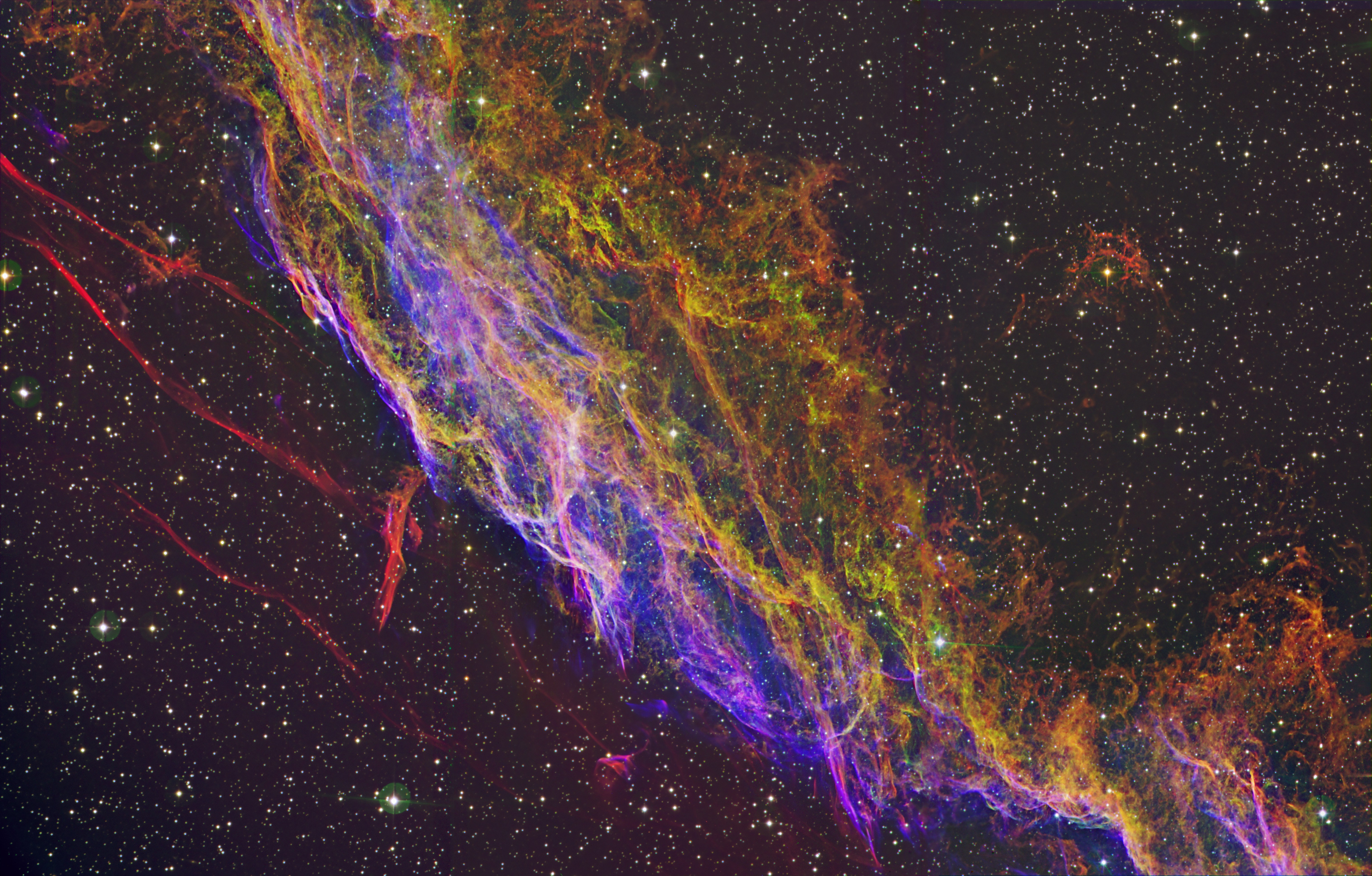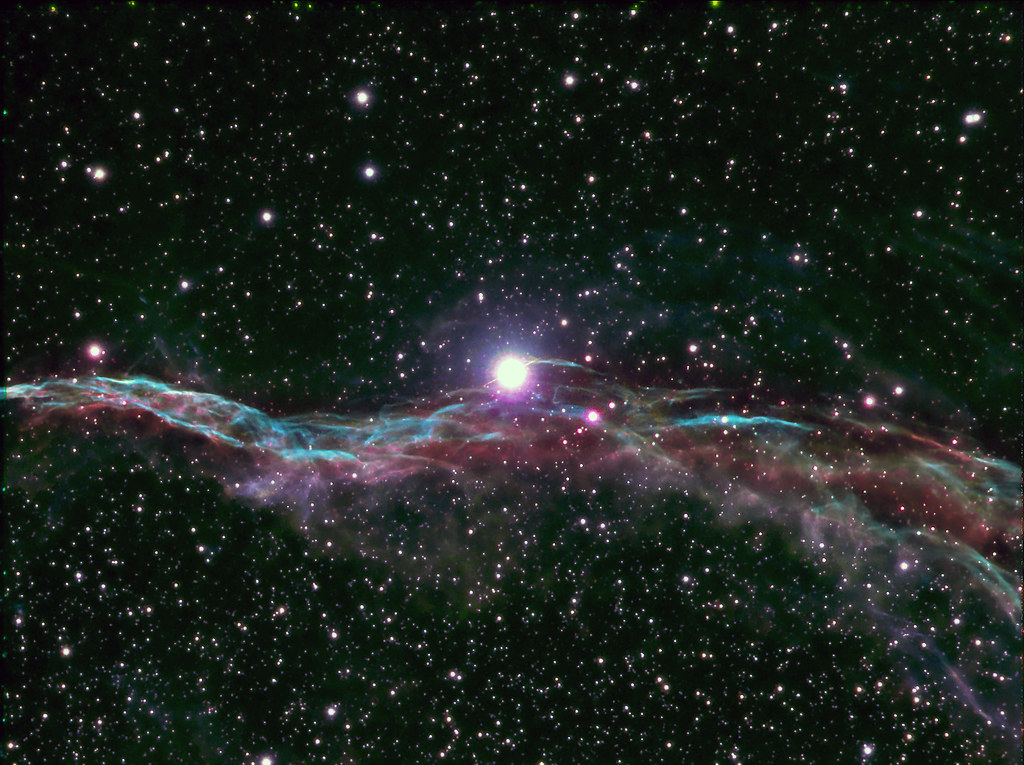This truly stunning image of the Eastern Veil SNR was released at the very end of 2010 by the Issac Newton Group of Telescopes.
Clik here to view.

NGC 6992 Credit: A. Oscoz, D. López, P. Rodríguez-Gil and L. Chinarro
The nebula is located approximately 1470 light years from Earth and was produced by a detonating star that died between 5000 and 8000 years ago.
The nebula is the visible portion of the much larger Cygnus Loop and is divided into several arcs, with the image above showing part of the eastern section. Since it’s formation the remnant has expanded to a size that makes it appear to have a diameter around 6 times that of the full moon, or 36 times it’s area when viewed in the night sky. This translates to roughly 50 light years in physical diameter.
The loop is one of the brightest features in the X-ray skyscape as viewed from Earth. The nebula contains large quantities of hydrogen, sulphur and doubly ionised oxygen (OIII) each of which have been picked up in the filters used by the Newton Telescopes. They are displayed in the image as red, blue and green respectively.
The classification name given to this section is NGC 6992 of the nebula, and the Eastern section is also happens the brightest region of the loop.
The nebula was first observed by William Hershel in September 1784.
As the nebula is part of the Cygnus loop it can be viewed in the constellation Cygnus and is most spectacular when viewed through an OIII filter.
Clik here to view.

The Western Veil Nebula Credit: Nick Howes
You can read more here.
